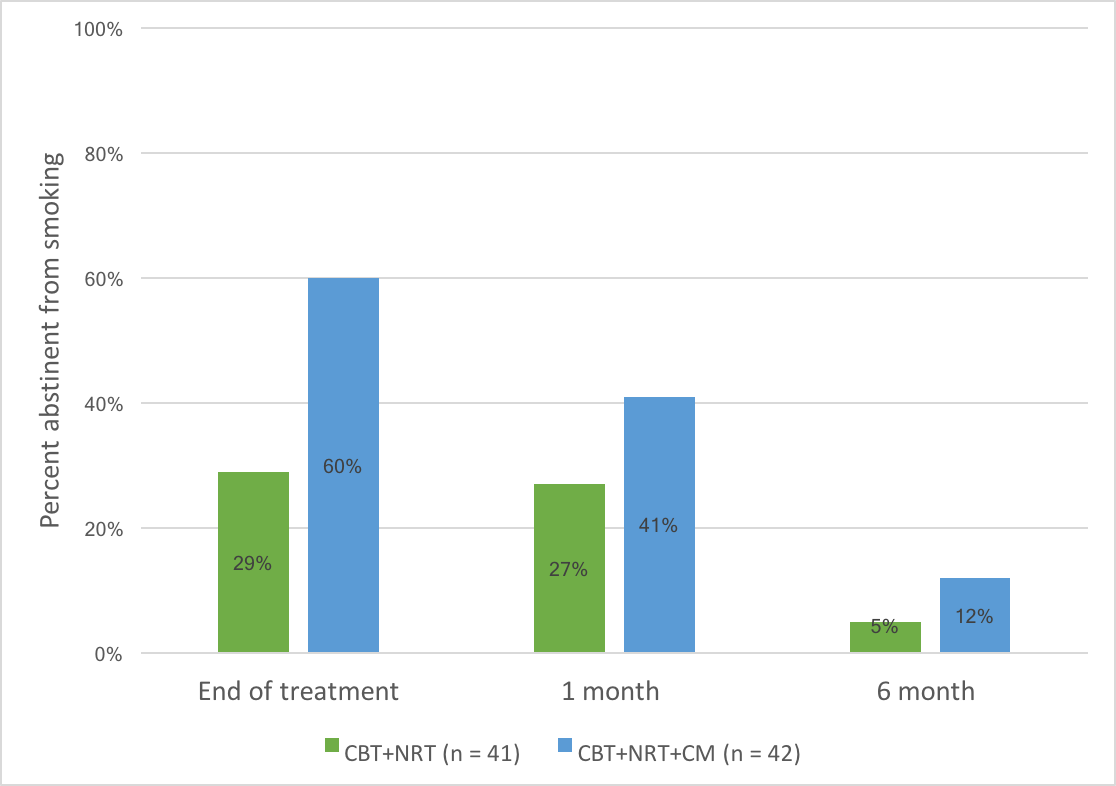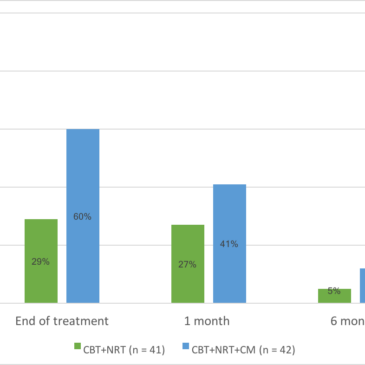Individuals with alcohol dependence have much higher rates of tobacco use than the general population. Clinical practice guidelines suggest that smokers receiving treatment for other substance use be offered evidence-based treatment for smoking cessation. One such treatment is contingency management, where patients receive positive reinforcement for engaging in behaviors that lead to abstinence or reduced smoking. This week, ASHES reviews a study by Judith Conney and colleagues that evaluates contingency management as an intervention for smoking cessation among patients receiving treatment for alcohol use problems.
What was the research question?
Does contingency management help veterans in treatment for alcohol abuse or dependence quit smoking?
What did the researchers do?
Researchers randomly assigned 83 individuals from a VA hospital intensive outpatient alcohol and drug use treatment program to one of two possible interventions to help them quit smoking: 1. Cognitive behavioral therapy (CBT) with nicotine replacement therapy (NRT) or 2. Contingency management (CM) in addition to CBT and NRT. Participants received treatment in their respective groups in tandem with a three-week intensive outpatient alcohol and drug program that met with participants 5 days per week. Researchers measured smoking abstinence at the end of treatment, 1 month, and 6 months after treatment.
What did they find?
Researchers found that participants in the CM treatment group were significantly more likely to be abstinent from smoking at the end of treatment (Figure 1). Participants in the CM group continued to have higher rates of smoking abstinence at the 1 and 6 month follow-ups. Researchers also found that participants in the CM group who quit smoking at the end of treatment were more likely than others to be abstinent from alcohol and drugs at that time, as well.
 Figure. The percent of participants abstinent from smoking at the end of treatment, at 1 month, and at 6 months. Figure adapted from Cooney et al. (2017). Click image to enlarge.
Figure. The percent of participants abstinent from smoking at the end of treatment, at 1 month, and at 6 months. Figure adapted from Cooney et al. (2017). Click image to enlarge.
Why do these findings matter?
These findings suggest that CM, when used with CBT and NRT, is an effective treatment to help smokers with alcohol and drug problems quit smoking for a short amount of time. The finding that using CM to quit smoking also appears to reduce drug and alcohol use for those who quit smoking is also promising. It suggests that CM might be potentially helpful for those with co-occurring addictions.
Every study has limitations. What were the limitations in this study?
Limitations of this study include having no non-treatment control and potential treatment bias. Since there was no non-treated control group, results cannot tell us if either treatment group would result in better or worse outcomes than a group that received none of the treatments. Additionally, the same therapist was used to provide treatment for both conditions, which raises the potential for bias and relies on a single therapist’s competency with different interventions.
For more information:
If you or a loved one has a problem with smoking, please view Your First Step to Change. For additional tools, please visit the BASIS Addiction Resources page.
— Alec Conte
What do you think? Please use the comment link below to provide feedback on this article.




